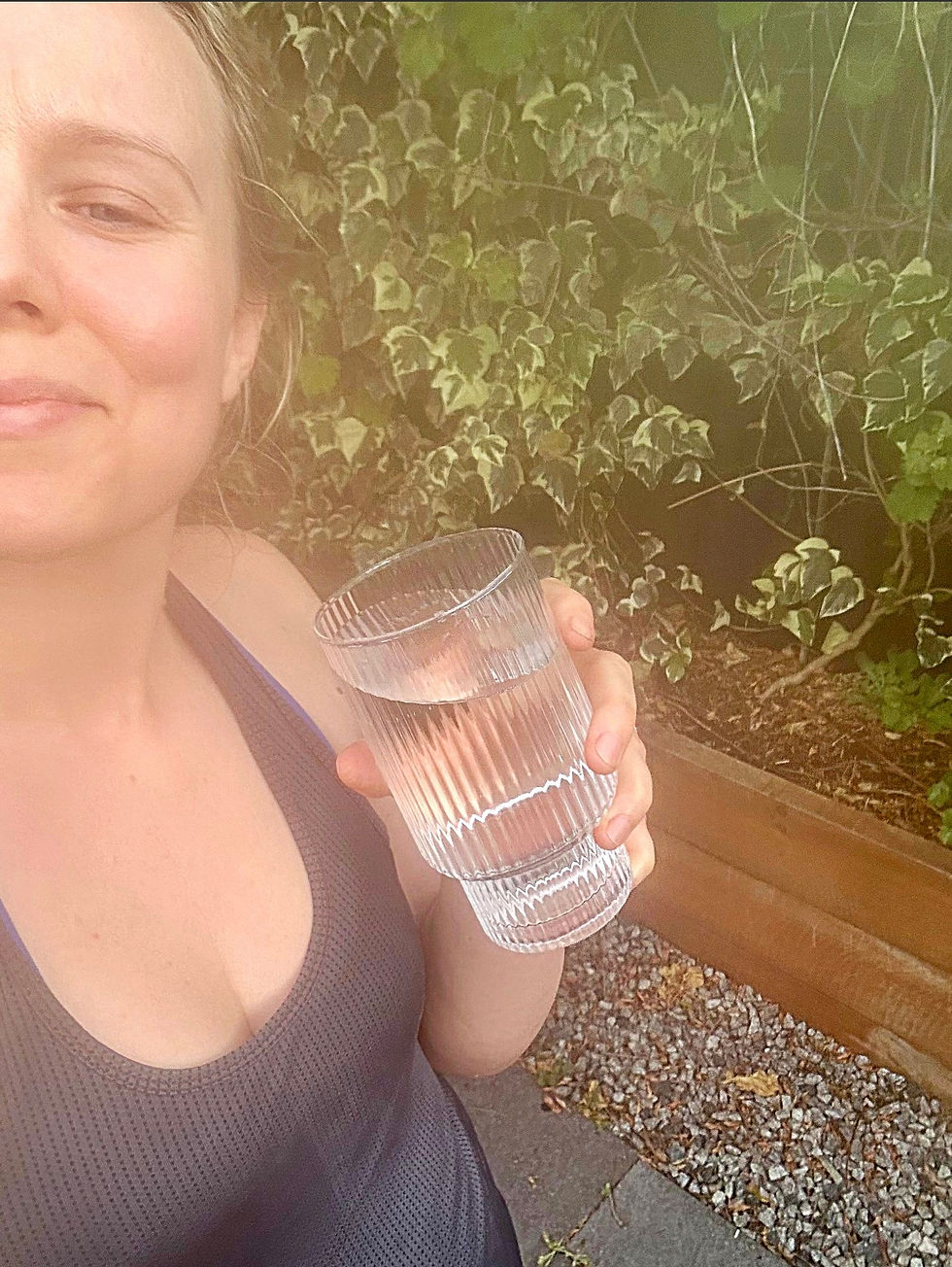The Skinny on Sugar
- Kelley Sloan

- Jul 24, 2020
- 4 min read
We love it, we hate it, we crave it, were addicted to it, we quit it, we can't live without it... We all hear about the evils of sugar all the time but somehow it is still up there as one of the most loved ingredients in the foods we eat. The reality is we are never going to completely cut sugar from our diets in some way so better that we become educated about it and make healthy choices around it.
I come across people everyday that tell me they don't eat sugar... however, they drink wine, eat raw balls with artificial sweeteners, use sauces out of pre made jars in the supermarket, add artificial sweeteners to their coffee. Just because you don't eat a chocolate bar or drink a can of soft drink, it doesn't mean you don't consume sugar.
I am a self confessed hot chocolate loving sweet tooth and there's no way sugar wouldn't factor into my day in some way. Sugar is in most products, to some degree, whether it's from a more natural or a man made source it's a monumental challenge to try to escape it. Eating a mainly whole foods diet and cooking sauces from scratch using herbs, spices, olive oils and so on cuts a whole heap of sugar out from the get go. Knowing how to read the packaging on products that we do have to purchase and also knowing how sugar is labelled are two major ways to know what you're purchasing.
Food Labels
We are very lucky in Australia that nutritional information on packaged products is mandatory by law. So companies have to be transparent with what they're putting in our food.
The World Health Organisation recommend we have no more than 10 teaspoons per day. To me, that's quite a lot to be having every single day, so I like to think on the basis of having up to 5 with a little wiggle room to go between 5-10 teaspoons.
When you read the back of a label they don't put things simply in teaspoons, they use grams, and that's a little harder to wrap your head around.
1 teaspoon = 4.2grams
So if you pick up a product and under the title SUGARS the serving suggestion has 50g per serve that product needs to never enter your body! I like to stick to products that have around 1 teaspoon of sugar per serve maximum. I give a little leeway here and usually go by the standard of 5g and under.
Generally you want to look at the 'Average Quantity Per Serve', and products will have a serving suggestion they advise you to adhere too, and take your sugar quantity from there. That is unless you're planning to eat the whole product in one hit and then look to the next column for the sugar contained in either the product as a whole, or a larger serving size and work your sugar load out from there.

Ingredients
Reading the ingredients on packaging also gives you a great idea of not only how much sugar is in a product but also the types. If sugar, or a name for it, is in the first few ingredients on a pack then that is a large proportion of what is in the product. But there are so many names for sugar it's hard to know what's what!
My approach is natural is best in most cases. Anything chemical and man made is a no no in my recipes. I would much rather use honey, 100% pure maple syrup or dates as a sweetener that also have other nutrients and health benefits as well, rather than a chemical mass produced in a factory. In most cases, artificial sweeteners have little to no nutritional benefit whatsoever, but sometimes with our pre packaged goods this is unavoidable.
**If you are insulin resistant, pre diabetic or diabetic this may differ for you and you should reach out to a nutritionist or dietitian for support alongside your general practitioner and specialists.
The many, many, many names for sugar + artificial sweeteners
It is pretty terrible how many names are out there for sugar... most of these are not natural, some have neurotoxic qualities, some are known carcinogens and some are hormone disruptors just to name a few of the negatives that go along with man made sweeteners.
Look out for these names on your products and even if the sugar count looks low and within a nutritionally sound range... you definitely want to limit the amount of these things going into your body.
agave nectar
Barbados sugar
barley malt
beet sugar
blackstrap molasses
brown rice syrup
brown sugar
buttered syrup/sugar/buttercream
cane juice/crystals
cane sugar
carob syrup
caramel
castor sugar
coconut sugar
corn syrup
corn syrup solids
confectioners’ sugar
(aka powdered sugar)
crystalline fructose
date sugar
dextran/dextrin
dextrose
dehydrated cane juice
demerara sugar
diastatic malt
diatase
ethyl maltol
evaporated cane juice
florida crystals
fructose
fruit juice
fruit juice concentrate
galactose
glucose
glucose solids
golden sugar
golden syrup
grape sugar
HFCS (high fructose corn syrup)
honey
icing sugar
invert sugar
lactose
maltodextrin
maltose
malt sugar/syrup
mannitol
maple syrup
molasses
muscovado
panela
panocha
raw sugar
rice malt syrup
rice syrup
refiner’s syrup
sorbitol
sorghum syrup
stevia
sucrose
sugar (granulated)
sucanat
treacle
turbinado sugar
yellow sugar
So the take home here is sugar is unavoidable! It is in natural and shelf products so understanding what is in your products is the biggest key to success in reducing your sugar intake. Eating it in small doses is fine but overeating it, particularly if a lot of it is artificial, is not great for the outlook of your long term health. So enjoy a piece of cake at a birthday party but don't go eating the whole thing!
Happy eating!
💙 Kel xx




Comments